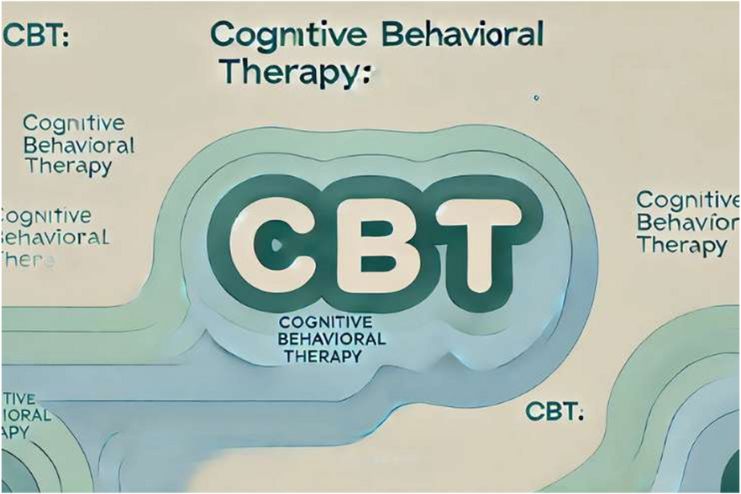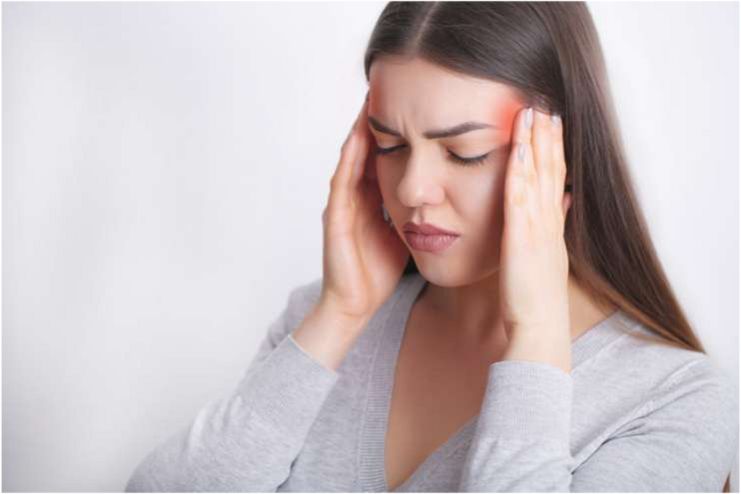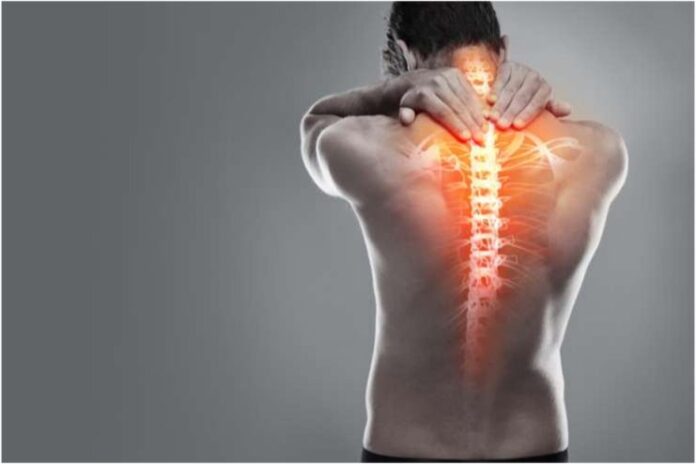Affiliate Disclaimer
Some links in this article are affiliate links. We may earn a small commission if you make a purchase through these links, at no extra cost to you. We only recommend products we find useful to our readersChronic pain sufferers frequently question whether their suffering is “all in their head,” mainly when it is hard to identify the physical source of the pain. However, not being able to pinpoint a physical cause for pain does not lessen or erase the suffering someone endures. A person experiences pain on both a physical and psychological level.
The mind and body are the same, after all. In addition to the physical toll, chronic pain’s emotional toll frequently results in feelings of frustration, loneliness, and mental exhaustion.
This article is your companion in that fight. It examines various realistic and valuable coping mechanisms to equip you with the means to recover control and find moments.
Understanding Chronic Pain and Its Effects
Chronic pain is a complicated, multidimensional ailment that affects every aspect of everyday life; it is not a one-size-fits-all experience. In contrast to acute pain, which instructs the body to treat the damage, chronic pain endures and frequently lingers long after the underlying cause has healed.
Chronic pain is long-term pain that lasts past the typical recuperation period or coexists with a chronic illness, such as arthritis. A chronic pain condition might be “on” and “off” or continuous. People may become so affected that they cannot work, eat healthily, exercise, or enjoy life. Chronic pain is one serious medical problem that can and ought to be treated.
Approximately 20.9% of American adults (51.6 million) reported having chronic pain in 2021, according to the U.S. Centers for Disease Control and Prevention (CDC) research.
If you or a loved one seems to be dealing with chronic pain, realize that you or they are not alone in their suffering. Therapy and support groups are two multidisciplinary treatment options that can help control symptoms and provide hope.
Related Articles: Stimulation Of Brain Can Reduce Chronic Pain, New Study Suggests
11 Advanced Coping Strategies for Chronic Pain
1. Mindfulness-Based Pain Management:

Being mindful is more than just a technique; it’s a life-changing approach that gives you a fresh outlook on chronic pain. Mindfulness invites you to watch the suffering with inquiry and nonjudgmental awareness instead of resisting it or giving in to its hold.
Leader in mindfulness practice Jon Kabat-Zinn states, “Mindfulness is the awareness which arises through paying attention, on purpose, in the present moment, non-judgmentally.”
Researchers have demonstrated that mindfulness techniques and concepts can help people manage the symptoms of anxiety, depression, stress, and other mental health issues. They have also extensively studied the usefulness of mindfulness as a treatment for chronic pain.
People with chronic pain can better control their negative or concerning thoughts about their pain by engaging in daily mindfulness practice. These thoughts are common and have the potential to worsen pain and alter mood. It is possible to manage pain and lessen feelings of anxiety and sadness by concentrating on body relaxation and accepting the breath and bodily sensations as they are.
2. Cognitive Behavioral Therapy (CBT):

Like a mental toolbox, cognitive behavioral therapy (CBT) gives you the tools to change the way you think and perceive chronic pain. It’s about altering how you perceive and respond to pain, not about rejecting its presence.
Psychosocial characteristics, such as the capacity for empathy, have been linked in studies to pain intensity. The most popular psychologic treatment for those with chronic pain is cognitive-behavioral therapy (CBT).
According to Joseph Hullett, MD, a board-certified psychiatrist and senior medical director at OptumHealth Behavioral Solutions in Golden Valley, Minnesota, “If you are lying in bed and hurting, the pain is your whole world.”
A type of talk therapy, cognitive behavioral therapy (CBT), assists patients in recognizing and learning how to modify unhelpful ideas and actions. According to CBT, people generate their own experiences, including pain, rather than external circumstances and occurrences.
Even if the actual level of pain remains constant, people can improve their coping mechanisms and alter their perception of pain by changing their negative beliefs and actions.
3. Acceptance and Commitment Therapy (ACT):

Acceptance and Commitment Therapy, or “ACT” for short, is one of the most promising treatments for human suffering.
ACT is an experimentally supported third-wave cognitive behavioral treatment that builds on classic cognitive behavioral therapy (CBT) and employs mindfulness, commitment, acceptance, and behavior modification techniques to improve psychological flexibility.
ACT contests conventional ideas of pain care that emphasize pain alleviation and other “feel good” strategies. ACT for chronic pain goes against nearly every biological strategy for pain management, including the use of analgesic drugs.
To cope and operate, you must acknowledge and adjust to your triggers. Accepting pain lessens psychological stress and cognitive dissonance, which frequently enhances both physical and mental health. Acceptance leads to the understanding that you must devote more time to providing yourself with the respect, love, and self-care you deserve.
Related Articles: 10 Tips for Managing Arthritis Pain Without Medication
4. Biofeedback and Neurofeedback:

What if your body could communicate its hidden signals to you so you could learn how to handle pain? It is the core of biofeedback and neurofeedback, innovative approaches that revolutionize pain care through technology.
Biofeedback: For the estimated 50 million Americans who suffer from chronic pain, biofeedback therapy presents a possible substitute for medications like opioids. Biofeedback treatment might help you regain control over your body when it seems to be against you.
You can change your usually uncontrollable responses to stress and pain by learning mindfulness and breathing methods from a biofeedback therapist. For instance, an EMG session can show you have a particularly tight muscle. That can imply that it contributes to discomfort or the underlying cause.
Neurofeedback: Although researchers first recognized neurofeedback as a treatment for neurological and psychological disorders, they are now increasingly investigating it as a supplemental treatment for chronic pain.
Complex interactions between the brain and nerve system are involved in chronic pain. Neurofeedback addresses these interactions and affects how pain is perceived by teaching the brain to control its activity. By learning how to alter brain pathways throughout sessions, people can lessen the severity and perception of chronic pain.
5. Graded Motor Imagery (GMI):

Graded Motor Imagery (GMI) retrains the brain to alter how discomfort is perceived, acting as a mental practice for pain management. It predicates the intriguing notion that pain is a complex brain-generated sensation that can be molded with deliberate practice rather than merely being a reaction to injury.
A treatment approach called Graded Motor Imagery (GMI) uses three steps to activate the premotor and primary motor nerves gradually:
Laterality Training: You can stimulate the brain’s motor areas without inducing pain by differentiating between pictures of the left and right body parts. It’s similar to training your brain to move safely without using your muscles.
Imagined Movement: During this stage, you picture the afflicted body part moving painlessly. For example, you practice lifting your arm in your mind if it hurts. The brain establishes a new, constructive connection between movement and pain.
Mirror therapy: It involves reflecting the image of your uninjured limb in a mirror to give the impression that the wounded limb is moving naturally. By deceiving the brain, this illusion strengthens the notion that motion is painless.
GMI has been used to treat other complicated pain and movement disorders since it was created by Moseley et al. (NOI group) as a way to manage pain and functional problems in individuals with chronic complex regional pain syndrome (CRPS).
6. Holistic Approaches (e.g., acupuncture, aromatherapy):

Holistic techniques fill in the gaps left by traditional treatments for chronic pain by combining traditional knowledge with natural cures. These treatments emphasize fostering the mind, body, and soul as a cohesive whole rather than only reducing pain.
Acupuncture: Acupuncture is a traditional Chinese treatment method that has gained popularity as a successful pain management strategy. It provides structured programs, educational services, and valuable resources to help people with pain management and rehabilitation.
Its use in treating chronic pain entails a thorough process that includes individualized treatment programs and preliminary evaluations to pinpoint certain pain areas. These management programs occasionally combine acupuncture sessions with other complementary therapies, such as acupressure or herbal remedies, to create a holistic therapeutic environment.
Aromatherapy: In contrast, aromatherapy harnesses the healing potential of fragrance. Essential oils with soothing and anti-inflammatory qualities include peppermint, eucalyptus, and lavender. These oils can help reduce stress, elevate mood, and induce calm that resists the hold of chronic pain, whether they are applied topically, diffused into the air, or mixed into a warm bath.
7. Pain Rehabilitation Programs:

To restore functionality, enhance mental health, and give people back control of their lives, pain rehabilitation programs serve as the comprehensive road map for managing chronic pain. These programs treat pain’s psychological, emotional, and physical aspects comprehensively and individually, going beyond symptom reduction.
Physicians, physical therapists, psychologists, and dietitians might contribute to a multidisciplinary pain rehabilitation program. The objective is to develop a personalized strategy based on each person’s goals and challenges.
Related Articles: 15 Natural Home Remedies For Pain For Effective Results
8. Sleep Management and Pain:

Health and well-being throughout life depend on getting enough good sleep. Several illnesses, including heart disease, type 2 diabetes, obesity, cancer, and mental health issues, are linked to lack of sleep.
Chronic pain and sleep issues appear to be related. Chronic pain patients may have trouble falling asleep or experience many nighttime awakenings that interfere with their sleep. Because sleep quality is frequently low, you may feel extremely exhausted in the morning even if you receive a decent quantity of sleep. People often wish to address sleep as part of pain management because of this.
You may become more sensitive to pain if you have a restless night. Sleep and pain are interdependent and have an impact on one another. A reciprocal link exists in which pain throughout the day influences the quality of sleep that night, and poor sleep raises pain levels the following day.
Prioritizing sleep allows you to do more than relax; it also restores your body’s ability to cope with pain with vigor and resilience.
9. Nutrition and Pain Management:

Food serves as the body’s medicine in addition to being fuel, particularly when it comes to treating chronic pain. By making thoughtful dietary adjustments, you can use nutrition’s inherent healing ability to lower inflammation, promote general health, and lessen the severity of pain.
Poor food intake is the most modifiable risk factor for morbidity and the leading cause of death worldwide. Inadequate food habits, poor diet quality, high weight status, and the likelihood of multimorbidity linked to chronic pain.
Over the past twenty years, consumers, healthcare experts, and pain groups have all recognized the importance of nutrition in pain management on occasion, and interest in this topic has increased dramatically.
Consider antioxidant-rich fruits like blueberries, omega-3-rich fish like salmon, and colorful veggies like spinach and kale. These nutrients help reduce chronic inflammation, which exacerbates fibromyalgia and arthritis.
Conversely, reducing trans fats, refined carbohydrates, and processed foods can lessen the factors that cause inflammation. For example, replacing sugary snacks with nuts or seeds promotes joint health and maintains consistent energy levels throughout the day.
10. Assistive Devices and Adaptive Techniques:

Managing everyday activities that used to be straightforward is often a challenge for those with chronic pain. Statistics Canada reports that 16% of Canadians aged 18 to 64 and 27% of seniors have some form of chronic pain, demonstrating that this need is not unique to Canadians.
Adaptive strategies and assistive equipment are the unsung heroes of pain management. They are intended to improve independence, reduce physical strain, and reestablish a sense of normalcy.
Simple tools and cutting-edge electronics are examples of assistive equipment. People with arthritis experience less strain using ergonomic kitchen utensils with padded handles.
Voice-activated intelligent assistants or weighted pens can change daily routines for people who struggle with fine motor skills. Mobility aids like braces, walkers, and canes offer stability and help lessen strain on aching joints.
These tools and techniques aren’t simply for convenience; they help people regain their independence and demonstrate that chronic pain doesn’t have to control everyday routines.
11. Social Support Networks:

Since chronic pain is a chronic condition, sustained support is essential to long-term well-being. Having social ties helps you deal with the emotional highs and lows of having chronic pain and offers continuous support.
You won’t ever feel alone on your trip if you have a strong support system that will support your dedication to chronic pain treatment techniques.
A vital first step is to ask friends and family for help. Honestly and openly, discuss your requirements, limitations, and experiences with chronic pain. When needed, establish limits, and don’t be afraid to seek assistance.
Join local or online support groups to meet people who genuinely get what you’re going through. A therapist or pain management specialist can also help manage the psychological and emotional aspects of chronic pain.
Conclusion
Managing chronic pain necessitates a multifaceted strategy that considers mental, emotional, and physical aspects of the experience rather than only suffering it. Every tactic provides a different route to empowerment and relief, ranging from therapy and mindfulness to diet, assistive technology, and the restorative potential of social ties.
Keep in mind that chronic pain is only one aspect of your tale and does not define it while you experiment with these sophisticated techniques. By getting expert advice, you can customize your pain management strategy to meet your needs and maximize safety and efficacy. You may recover your life with each step you take to comprehend and control your misery.
References
- https://austinpaindoctor.com/coping-mechanisms-chronic-pain
- https://pmc.ncbi.nlm.nih.gov/articles/PMC10373679
- https://www.northernpaincentre.com.au/wellness/understanding-chronic-pain-2/understanding-chronic-pain
- https://www.mythrivepsychology.com/online-therapy
- https://www.cdc.gov/mmwr/volumes/72/wr/mm7215a1.htm
- https://my.clevelandclinic.org/health/diseases/4798-chronic-pain
- https://www.hopkinsmedicine.org/health/conditions-and-diseases/chronic-pain
- https://www.mayoclinichealthsystem.org/hometown-health/speaking-of-health/use-mindfulness-to-cope-with-chronic-pain
- https://www.va.gov/painmanagement/docs/cbt-cp_therapist_manual.pdf
- https://pmc.ncbi.nlm.nih.gov/articles/PMC5999451
- https://www.webmd.com/pain-management/features/cognitive-behavioral
- https://integrativepainscienceinstitute.com/acceptance-and-commitment-therapy-act-for-chronic-pain
- https://pmc.ncbi.nlm.nih.gov/articles/PMC7378966
- https://www.everydayhealth.com/chronic-pain/biofeedback-therapy-can-help-chronic-pain
- https://www.physio-pedia.com/Graded_Motor_Imagery
- https://www.noigroup.com/graded-motor-imagery
- https://forteortho.com/how-gmi-therapy-can-help-improve-quality-of-life-for-chronic-pain-sufferers
- https://improvemyagility.com/combatting-chronic-pain-holistic-approaches-for-long-term-relief
- https://www.instituteforchronicpain.org/treating-common-pain/what-is-pain-management/chronic-pain-rehabilitation
- https://painhealth.csse.uwa.edu.au/pain-module/sleep-and-pain
- https://pmc.ncbi.nlm.nih.gov/articles/PMC9289983
- https://pmc.ncbi.nlm.nih.gov/articles/PMC9571356
- https://www.iasp-pain.org/resources/fact-sheets/nutrition-and-chronic-pain
- https://healthmaxphysio.com/how-assistive-devices-help-chronic-pain-management
- https://cvpm.net/2024/04/the-impact-of-social-support-on-chronic-pain-building-a-supportive-network
- https://www.serenityhealthcarepartners.com/the-role-of-community-support-in-chronic-pain-management
In this Article




















